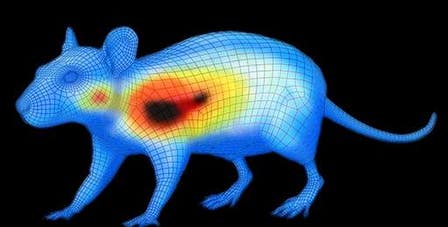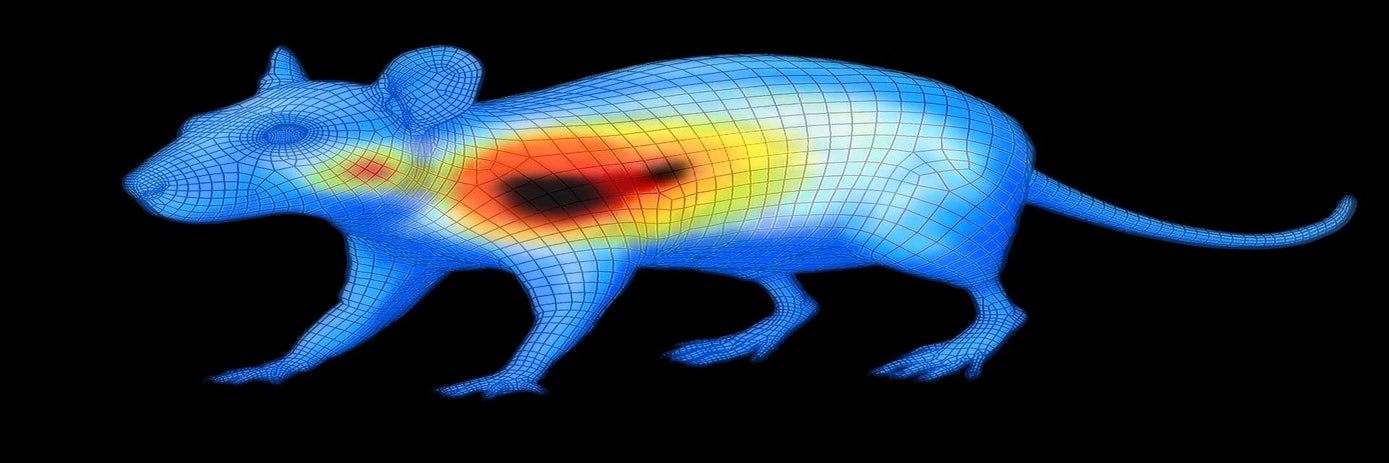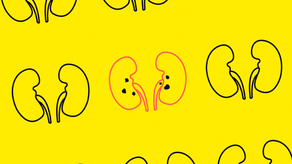In vivo fluorescence imaging is a non-invasive tool for visualizing and quantifying cellular and biological functions. Using biologically specific, validated fluorescent probes, scientists can visualize disease pathogenesis and related biological processes within the context of a living system.
The ability to provide earlier and more meaningful preclinical insights into disease processes and treatment effects makes fluorescence an attractive alternative to standard imaging approaches for certain preclinical investigations.
Key advantages of using in vivo fluorescence imaging
Non-invasive approach
In vivo fluorescence imaging is a non-invasive technique that uses light to visualize biological processes. The ability to image the same animals longitudinally reduces the number of animals required for experiments.
Early information
Imaging performed at the end of a study will likely miss key biological processes. In vivo fluorescence imaging provides opportunities to monitor changes in biology prior to overt physical changes. It can also detect therapeutic response shortly after treatment (prior to surrogate or clinical endpoints) and characterize multiple biomarkers over the course of disease (multiplex imaging).
Broad applications
In oncology research, in vivo fluorescence imaging can be used to predict changes in tumor burden, growth, regression, and metastasis based on early, quantifiable changes in proteases, cell surface receptors, or vascularity. Beyond oncology, fluorescence imaging can be utilized to study complex biology and detect early biological changes, biomarkers, and mechanisms that underlie other diseases such as liver and kidney toxicity, arthritis, or autoimmunity.
Functionality and versatility
Importantly, fluorescence imaging can be used for tracking CAR-NK cells or other cells that resist bioluminescent labeling, or when a luciferase causes an immune response. Fluorescent probes can also provide correlative data when used in combination with bioluminescence, microCT, or PET imaging for multimodal studies.
Ensuring your imaging study is a success
A key aspect of successful in vivo imaging is to set clear goals for your study and identify which imaging approach will provide the most appropriate benefits. For example, you need to decide whether your primary goal is to explore early or late disease and then decide which imaging approach will draw the most useful conclusions for your investigation.
Successful fluorescence imaging requires carefully chosen probes that have been validated for your biology of interest. Additionally, probes with high specificity and biologically appropriate characteristics, such as clearance rate and route of metabolism, will enable unique and meaningful biological information to be extracted from your studies.
At Revvity, our fluorescent imaging probes are developed through an extensive R&D process, designed to incorporate drug-like biodistribution properties, and validated for optimal target delivery and performance. Each probe’s structure, size, specificity, and physiochemical properties are optimized to achieve appropriate pharmacokinetics, biodistribution, and metabolic clearance characteristics essential for interrogating the relevant biology. To help inform your decisions and advance your oncology research, we have developed an interactive Selector Guide for IVISense™ fluorescent probes
 Guide
IVISense fluorescent probe selector guide for oncology research
Discover
. By matching probe properties to specific biology and biomarker characteristics, you can use the guide to better understand how imaging and quantification of early biological changes associated with disease development, therapeutic efficacy, and drug-induced tissue changes can be achieved.
Guide
IVISense fluorescent probe selector guide for oncology research
Discover
. By matching probe properties to specific biology and biomarker characteristics, you can use the guide to better understand how imaging and quantification of early biological changes associated with disease development, therapeutic efficacy, and drug-induced tissue changes can be achieved.
The information provided above is solely for informational and research purposes only. The information does not constitute medical advice and must not be used or interpreted as such. Consult a qualified veterinarian or researcher for specific guidance or use information. Revvity assumes no liability or responsibility for any injuries, losses, or damages resulting from the use or misuse of the provided information, and Revvity assumes no liability for any outcomes resulting from the use or misuse of any recommendations. The information is provided on an "as is" basis without warranties of any kind. Users are responsible for determining the suitability of any recommendations for the user’s particular research. Any recommendations provided by Revvity should not be considered a substitute for a user’s own professional judgment. Users are solely responsible for complying with all relevant laws, regulations, and institutional animal care and use committee (IACUC) guidelines in their use of the information provided.


































